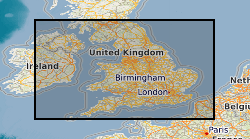GEOGRAPHIC INFORMATION SYSTEMS
Type of resources
Topics
Keywords
Contact for the resource
Provided by
Years
Formats
Representation types
Update frequencies
Scale
-

Information for this layer of the map based index (GeoIndex) is taken from the BGS National Landslide Database (NLD), which holds over 15000 records of landslides and is the definitive source of landslide information for Great Britain (excludes Northern Ireland, Isle of Man and the Channel Islands). Each landslide within the National Landslide Database is identified by a National Landslide Database ID number and a point location, as shown on this map. The National Landslide Database ID number represents an individual survey of a landslide, rather than just the landslide itself. This is because there could be several phases of movement within or extensions to the same landslide, particularly if it is a large and complex one. Subsequent surveys of the same landslide may be recorded in the database with the same National Landslide Database ID number but with a new Survey Number. Other information given for each record include; Landslide name, grid reference and whether the landslide record has been validated by the BGS Landslides Team. The point symbols at the designated location do not reflect the size and shape of the corresponding landslide, but just denote the recorded presence of a landslide within a range of accuracy.
-

Derived from data collated from the 2005 Aggregate Minerals Survey, carried out by BGS for the Department for Communities and Local Government (CLG) which provide an in-depth and up-to-date understanding of regional and national sales, inter-regional flows, transportation, consumption and permitted reserves of primary aggregates for England and Wales. The information is used to monitor and develop policies for the supply of aggregates. This data set depicts the flow of crushed rock aggregate between the regions of England and Wales. The data originator also has similar data for sand and gravel and also the same data derived from the 1997 and 2001 Aggregate Minerals Surveys.
 NERC Data Catalogue Service
NERC Data Catalogue Service